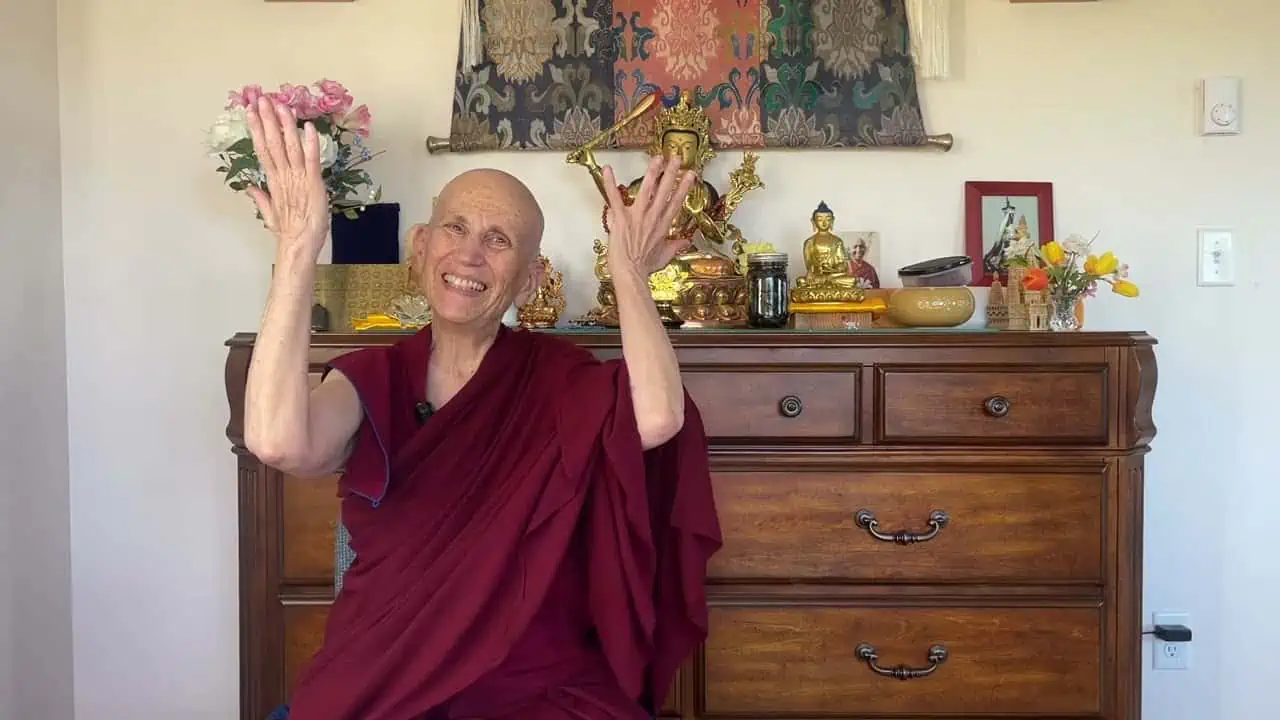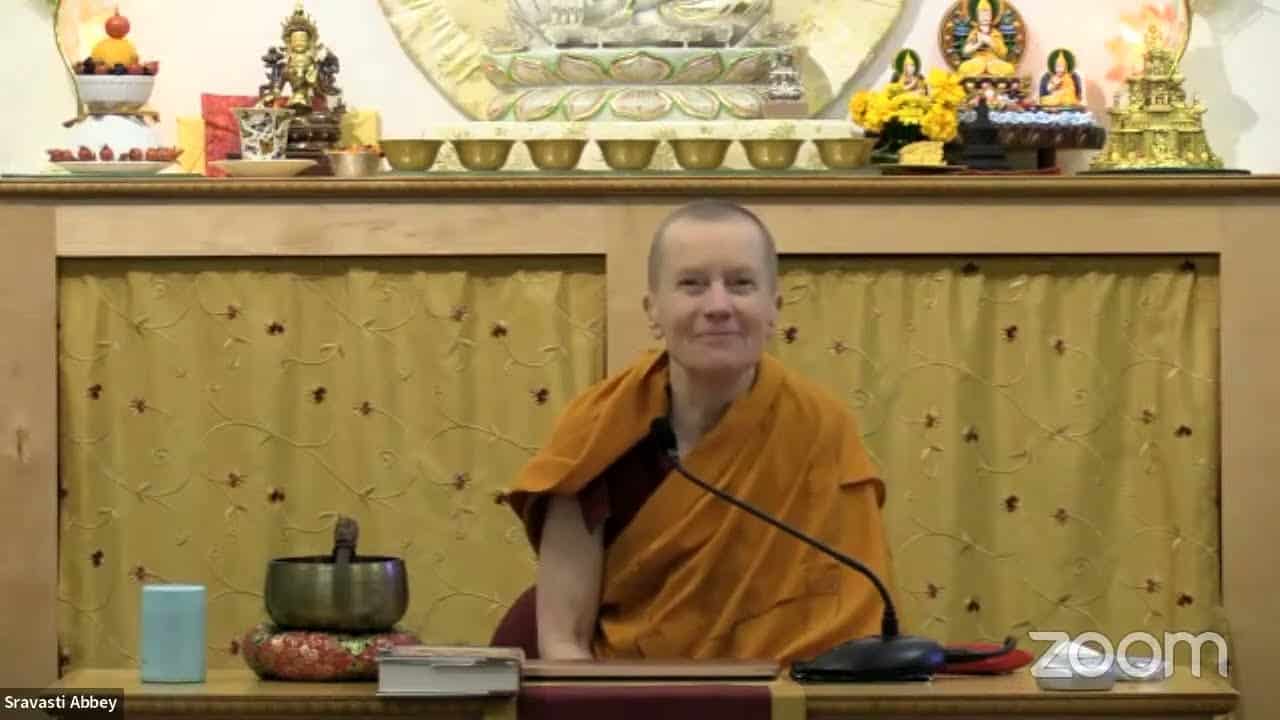Three aspects of the Tathagatagarbha
124 Samsara, Nirvana, and Buddha Nature
Part of an ongoing series of teachings (retreat and Friday) based on the book Samsara, Nirvana, and Buddha Nature, the third volume in The Library of Wisdom and Compassion series by His Holiness the Dalai Lama and Venerable Thubten Chodron.
- Three reasons why sentient beings can attain buddhahood
- Buddh body is pervasive, suchness is without differentiation, buddha lineage exists
- Three aspects of the tathagatagarbha
- Possessing the nature of the dharmakaya of self-arisen pristine wisdom
- Principal cause of the dharmakaya
- Awakening activities of the dharmakaya
- Dharmakaya of realisation and dharmakaya of teachings
- Profound teachings and vast teachings
- Correlation to the first three similes
- Emptiness of the sentient beings’s mind cannot differentiated from the natural purity of the dharmakaya
- Relationship to the fourth simile
- Tathagatagarbha has the buddha lineage or disposition
- Natually abiding buddha essence and transforming buddha essence
- Three buddha bodies
- Correlation to the remaining five similes
- Natural purity and purity free from adventitious defilements
- Importance of study, reflection and meditation of teachings on method and wisdom
Samsara, Nirvana, and Buddha Nature 124: Three Aspects of the Tathagatagarbha (download)
Contemplation points
- Consider the three reasonings that Maitreya asserts for each sentient being having the buddha essence. How do these counter the idea that there are inherently evil beings in the world? Explain this in your own words and then take some time to consider this in light of people in the world or in your own life that you view as bad, irredeemable, or evil. How does your view of these people soften with these reasonings in the mind?
- The buddhas’ bodies are pervasive so sentient beings can engage with the awakening activities of the buddhas
- The muchness of buddhas’ minds and of sentient beings cannot be differentiated because both are the emptiness of inherent existence
- Sentient beings possess the transforming buddha nature that can develop all of a buddha’s excellent qualities and transform into three buddha bodies
- The first aspect of the tathagatagarbha is that it has the nature of the dharmakaya of self-arisen pristine wisdom; it is pervaded by the awakening activities of the dharmakaya. Describe this in your own words. Why might a buddha not make his awakening activities evident? What have you seen in the world that could have been the awakening activities of a buddha that you might not have noticed at that time? What is the chief way in which a buddha’s awakening activities engage with and influence sentient beings? How have you seen this at work in your own life?
- Consider the second aspect of the tathagatagarbha: that it has the nature of emptiness; the emptiness of sentient beings minds cannot be differentiated from the aspect of the natural purity of the dharmakaya (the mind is naturally empty of inherent existence). Why is it important that you qualify that this is true for a mind in meditative equipoise on emptiness? Why would a difference appear to a mind perceiving conventional existence?
- The third aspect of tathagatagarbha is that it has the nature of the buddha lineage/disposition which culminates as the three bodies of a buddha. What are those three bodies of a buddha? Which did Shakyamuni Buddha appear as?
- Consider how, regarding the transforming buddha disposition, a small cause can lead to such a big result. Make some examples of this in the world around you (choices you have made, natural phenomenon, etc). Now apply this to your own mind and your ability to develop virtuous qualities and abandon nonvirtuous ones. Get a sense that, because of your own transforming buddha disposition, you in fact have the capacity to attain buddhahood. Allow that awareness to fuel both energy and inspiration for practicing the path.
Venerable Thubten Chodron
Venerable Chodron emphasizes the practical application of Buddha’s teachings in our daily lives and is especially skilled at explaining them in ways easily understood and practiced by Westerners. She is well known for her warm, humorous, and lucid teachings. She was ordained as a Buddhist nun in 1977 by Kyabje Ling Rinpoche in Dharamsala, India, and in 1986 she received bhikshuni (full) ordination in Taiwan. Read her full bio.


